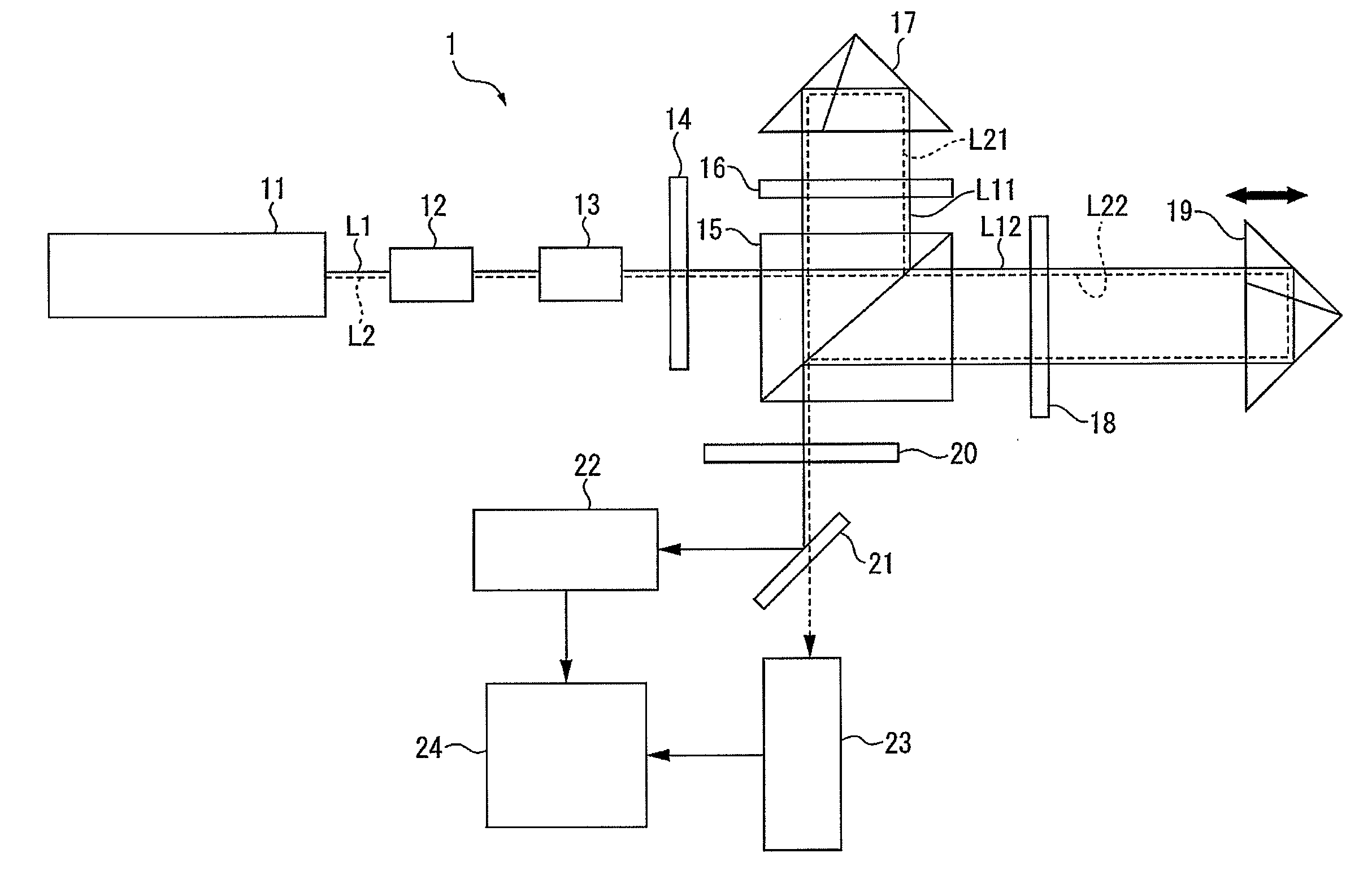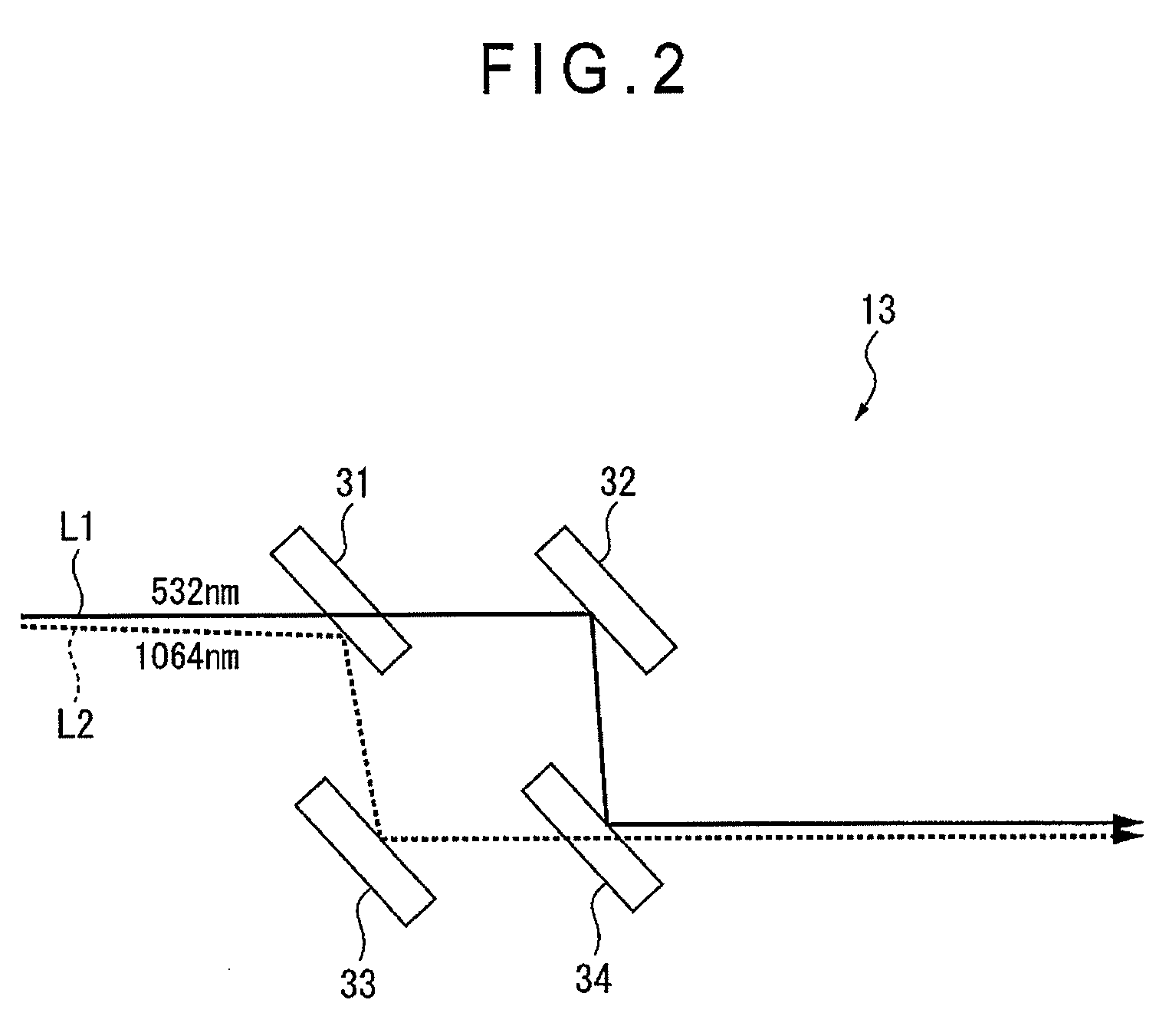Two-wavelength laser interferometer and method of adjusting optical axis in the same
a technology of optical axis and two-wavelength laser, which is applied in the direction of interferometers, measurement devices, instruments, etc., can solve the problems of large effect on measurement precision, affecting the realization of two-wavelength laser interferometry length measurement systems, and increasing measurement uncertainty, so as to reduce the number of optical components that are required, reduce the amount of beam misalignment detected, and reduce the effect of cos
- Summary
- Abstract
- Description
- Claims
- Application Information
AI Technical Summary
Benefits of technology
Problems solved by technology
Method used
Image
Examples
first exemplary embodiment
Entire Structure of the Two-Wavelength Laser Interferometer 1: See FIG. 1
[0035]As shown in FIG. 1, a two-wavelength laser interferometer 1 according to a first exemplary embodiment is provided by a Michelson-type interferometer. In such a Michelson-type interferometer, two laser beams L1 and L2 having different wavelengths are each split into reference beams L11 and L21 and measurement beams L12 and L22, and the reference beams L11 and L21 and measurement beams L12 and L22 are reflected from a reference surface and a target measurement surface and then superposed together. The beam superposed together is separated per wavelength and detected to obtain an amount of displacement of the target measurement surface. Through a calculation using the displacement amount obtained per wavelength, an amount of displacement of the target measurement surface applied with an atmospheric refractive index correction is obtained.
[0036]Specifically, the two-wavelength laser interferometer 1 include: ...
second exemplary embodiment
[0072]The two-wavelength laser interferometer according to the first exemplary embodiment exemplarily uses a single polarizing beam splitter that functions as the two-wavelength polarizing beam splitter 15. However, the two-wavelength polarizing beam splitter may be provided by a combination of a plurality of polarizing beam splitters.
[0073]When light having a wavelength other than the specified wavelength is incident upon a normal polarizing beam splitter, such a normal polarizing beam splitter may affect and reflect such light even when such light is P-polarized light. Accordingly, a simple combination of polarizing beam splitters is not usable as a two-wavelength polarizing beam splitter.
[0074]Recent developments in optical thin film technology have made possible the manufacture of polarizing beam splitters that function for laser beams of certain wavelengths while transmitting laser beams of the other wavelengths without affecting. Accordingly, in the second exemplary embodiment...
PUM
 Login to View More
Login to View More Abstract
Description
Claims
Application Information
 Login to View More
Login to View More - R&D
- Intellectual Property
- Life Sciences
- Materials
- Tech Scout
- Unparalleled Data Quality
- Higher Quality Content
- 60% Fewer Hallucinations
Browse by: Latest US Patents, China's latest patents, Technical Efficacy Thesaurus, Application Domain, Technology Topic, Popular Technical Reports.
© 2025 PatSnap. All rights reserved.Legal|Privacy policy|Modern Slavery Act Transparency Statement|Sitemap|About US| Contact US: help@patsnap.com



